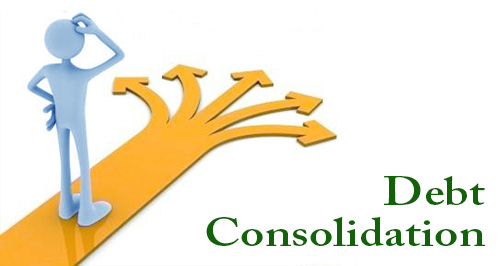If you are looking for an easy way to manage your existing debts that have different principals and interest rates, then debt consolidation can be a good option for you. It will help you replace your existing debts with a single debt that you can pay off at a fixed interest rate and get your payments simplified.
Here are the different ways you can get your debts consolidated:
- Secured Loans
- Personal loan
- Transferring balance
- Borrow from a 401(k) plan
- Debt consolidation program
- Combination of different methods
Secured Loans
Secured loans are taken out against some collateral, which acts as the borrower's guarantee to a creditor. If you have a house, a car, or even expensive jewelry, then you can take out a secured loan against it and use the funds to consolidate your existing debts. Usually the collateral lowers the interest on the loan and makes it easier for you to pay. If you have substantial equity in your house, then you can go for a Home Equity Loan or even a Home Equity Line of Credit (HELOCs). Most HELOCs are tax deductable, and the more equity you have on your home, the lower the interest rate you can expect. But you should make sure that you have a steady income so you can pay off the secured consolidation loan. Otherwise, you may default on your secured loan and end up losing your collateral to your lender.
Low interest Personal Loans
Consolidation loans should carry low interest rates. So, if you do not have any asset to use as collateral for a secured loan, then you should look for a low-interest personal loan. Low interest rates will lower your monthly payments and make the consolidation process much easier.
Balance Transfers
If you are struggling with too many credit cards, then you can consider a balance transfer to consolidate your credit card debts. First, you need to choose the card that carries the lowest interest and balance transfer fees. Then you can transfer the balances from your high interest cards to this low interest card. It will help you pay off your consolidated credit card balance at a lower interest rate, which saves you some money. But do not forget to go through the terms and conditions of the balance transfer before you start with the procedure.
Borrow from your 401(k) plan
This is a consolidation plan with minimal risk. If you have a 401k retirement plan, you may be able to borrow up to 50% of the balance (no more than $50,000) to consolidate debt. The interest you pay on the loan goes into your 401(k) plan, thereby helping you save for retirement. But if you switch or quit your job, you will have to repay the loan immediately; otherwise, the IRS will penalize you with a 10% early withdrawal on your income taxes.
Debt consolidation program
You can sign up with a Better Business Bureau accredited debt consolidation company and get enrolled in a consolidation program to consolidate your debts. On enrolling, the company will work on your debt issues and help you to consolidate your obligations.
Combination of different debt consolidation methods
You can also use more than one debt consolidation methods if you need to. When deciding to combine consolidation methods, you should always consider which methods will work the best.
Irrespective of the method you use to consolidate your debts, you should always budget your expenses and save as much as possible so you can rid yourself of your obligations faster.









